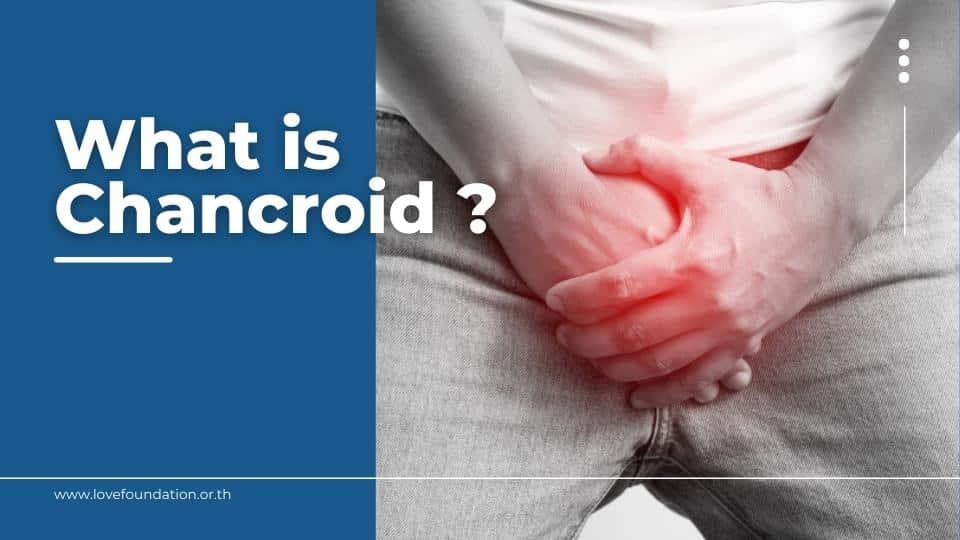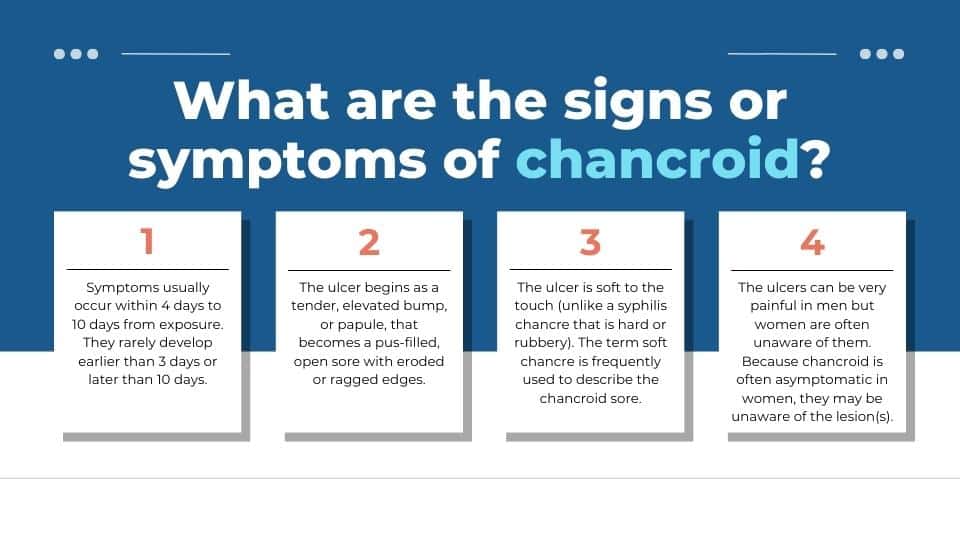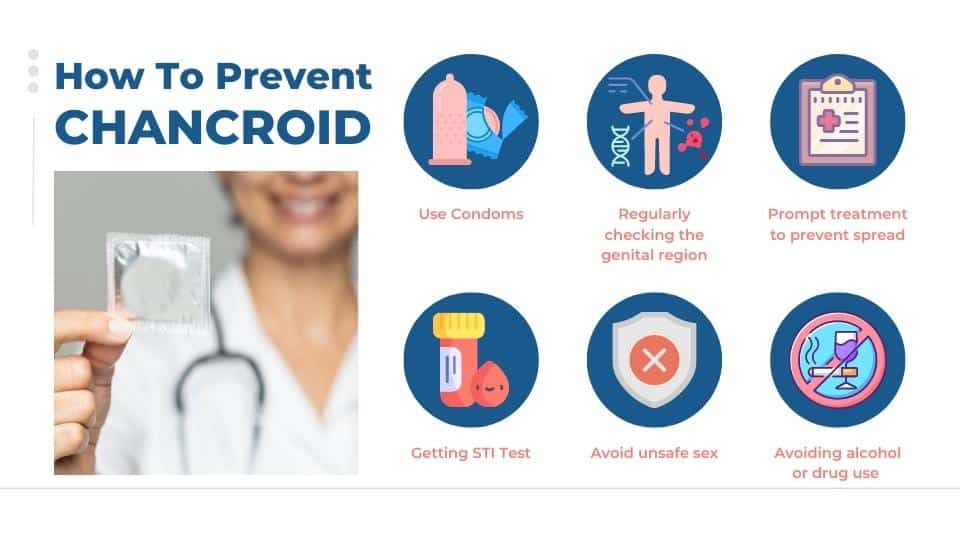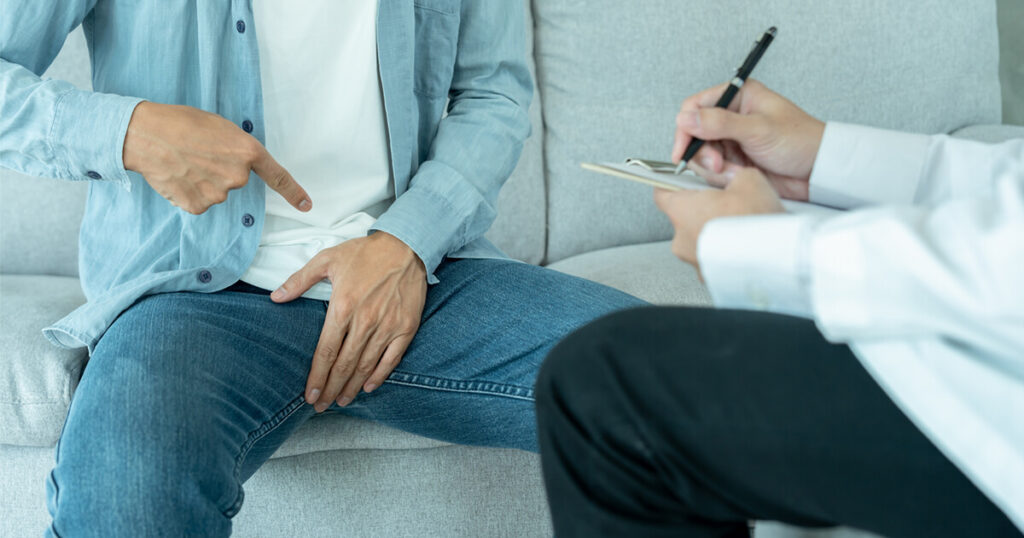Chancroid is a bacterial condition that causes open sores on or around the genitals. It’s a type of sexually transmitted infection (STI), which means it’s transmitted through sexual contact. Chancroid is a relatively common disease in the developing world. As with syphilis, the open sores caused by chancroid increase a person’s risk of acquiring other sexually transmitted infections.
In particular, these open sores increase the risk of HIV. They do this by making it easier for HIV to enter the bloodstream when a person is exposed. Intact skin is a reasonable barrier for HIV, which is not spread by skin-to-skin contact.
What causes Chancroid
Chancroid is caused bacteria called “Haemophilus Ducreyi”. It causes bumps that may feel tender when you touch them. The bumps fill with pus and may open up and become sores. These sores are most often on the genitals and are called ulcers. By painful genital ulcers and painful swollen lymph glands in the inguinal area. While chancroid is easily treatable, it also spreads very easily.

Who is at risk for Chancroid?
- If you’re sexually active, you may be at risk for chancroid.
- If you travel to or live in a country where the condition is more common, you may be more at risk.
- Drug or alcohol use disorder
- Anything associated with higher risk sexual practices
- Unprotected sexual contact or intercourse
- Multiple sexual partners
- Sexual contact or intercourse with a sex worker
- Rough intercourse
- Anal intercourse
- Being sexually active
- Living in some developing nations, such as parts of Africa and the Caribbean
What are the symptoms of Chancroid?
The symptoms may vary, Most people with chancroid begin to notice symptoms between 3 and 10 days after contracting the infection.
- Some people do not have any visible symptoms of chancroid.
- People with a penis
- Men and others with a penis may notice a small, red bump on their genitals that may change to an open sore within a day or so.
- The ulcer may form on any area of the genitals, including the penis and scrotum. The ulcers are frequently painful.
- People with a vagina
- Women and others with a vagina may develop four or more red bumps on the labia, between the labia and anus, or on the thighs. The labia are the folds of skin that cover the female genitals.
- After the bumps become ulcerated, or open, women may experience a burning or painful sensation during urination or bowel movements.
The following chancroid symptoms can occur in anyone:
- The most common symptoms of chancroid are painful, red-colored bumps in the genital region that become ulcerated, open sores.
- The base of the ulcer can appear grey or yellow.
- Chancroid sores are often very painful in men but less noticeable and painful in women.
- Urethritis, or inflammation of the urethra
- Abnormal vaginal discharge
- Pain and bleeding of the sore
- Dysuria, a condition caused by urethral inflammation
- The ulcers may bleed easily if touched.
- Pain during sexual intercourse or while urinating
- Swelling in the groin, which is where the lower abdomen and thigh meet
- Swollen lymph nodes that can break through the skin and lead to large abscesses, or collections of pus, that drain.

How is Chancroid diagnosed?
- To diagnose chancroid, a doctor will ask a person questions about their symptoms, sexual history, and travel history. Usually, a doctor will make a diagnosis of chancroid if a person’s symptoms match typical chancroid symptoms, and they test negative for other STIs.
- It’s important to note that chancroid can sometimes be difficult to diagnose on visual examination alone due to its similar appearance to STIs such as genital herpes and syphilis.
- Diagnosing the condition may involve taking samples of the fluid that drains from the sore. These samples are sent to a laboratory for analysis.
- Diagnosing chancroid currently isn’t possible through blood testing. Your doctor may also examine the lymph nodes in your groin for swelling and pain.
- A clinical presentation that is typical of chancroid (ulcer(s) and lymphadenopathy).
- Nucleic acid amplification tests (NAT) are not commercially available even in developed countries. In a research setting, combined NATs for syphilis (Treponema pallidum), chancroid (H. ducreyi) and herpes simplex virus have been evaluated with high sensitivity (> 95%) and specificity (99%).
- A definite diagnosis of chancroid traditionally requires the culture of H. ducreyi from material from the ulcer base on special culture media and under very specific laboratory conditions. The reported sensitivity of culture is 60–80%.
- A Gram stain of material from the ulcer base or from buboes can show typical clumping of the causative organism (described as a ‘school of fish’) but the sensitivity of the test is poor.
- No antigen or antibody detection test is in routine clinical use.
How is Chancroid treated?
Chancroid may be successfully treated with medication or surgery.
Medication
Your doctor will prescribe antibiotics to kill the bacteria that are causing your ulcers. Antibiotics may also help decrease the chance of scarring as the ulcer heals.
There are four antibiotics that are typically used to treat chancroid. They are:
- Azithromycin
- Ceftriaxone
- Ciprofoxacin
- Erythromycin
Your doctor will determine which antibiotic and dosage is best based on your healthcare needs.
It’s important to take the antibiotic as your doctor prescribed and to take the entire course of antibiotics, even if you notice that your sores/ulcers have begun to improve.
Surgery
Your doctor may drain a large and painful abscess in your lymph nodes with a needle or through surgery. This reduces swelling and pain as the sore heals but might cause some light scarring at the site.
A doctor will assess chancroid symptoms 3 to 7 days after prescribing antibiotic therapy. If symptoms remain, a doctor might:
- Reassess their diagnosis
- Ensure a person is taking their medications properly
- Test for other STIs, including HIV
- Explore whether the strain of H. ducreyi is resistant to the antibiotic prescribed
- Recovery time from chancroid mostly depends on the severity of the infection and the size of the sores. Large ulcers from chancroids can take more than 2 weeks to heal fully.
Chancroid Risks
Ineffective treatment. Men who are not circumcised and people living with HIV may not respond to typical chancroid treatment. If you are in one of these higher-risk categories, talk to your doctor about other steps you can take to help your ulcers heal.
Other health conditions. The open sores that chancroid causes make you more susceptible to other bacteria. The greatest risk of chancroid is that you are more likely to contract HIV while you are infected with chancroid.

How to prevent Chancroid
Prevention. The best way to avoid getting chancroid is to avoid having sex. However, if you are sexually active, you can take these steps to reduce your chance of getting chancroid:
- Regular and correct use of condoms
- Regularly checking the genital region for signs of abnormal bumps, sores, or swollen lymph nodes
- Avoidance of unsafe sex practices, such as frequently changing sex partners or having sexual intercourse with prostitutes or with partners who have other sex partners
- Prompt diagnosis and treatment of the infection (to prevent spread to other people)
- Identification of the sexual contacts of infected people, followed by counseling or treatment of these contacts
- Not having sex (anal, vaginal, or oral) is the most reliable way to prevent sexually transmitted diseases but is often unrealistic.
- Don’t have sexual contact with a person who has open sores on their genitals or groin
- Avoiding or limiting alcohol use and avoiding recreational drug use as these may impair judgment in making healthy choices
- Getting regular STI testing
References
Chancroid
- healthline.com/health/chancroid#risk-factors
What Is Chancroid?
- webmd.com/sexual-conditions/what-is-chancroid
How do you treat chancroid?
- medicalnewstoday.com/articles/322835#treatment
Chancroid
- msdmanuals.com/home/infections/sexually-transmitted-diseases-stds/chancroid

